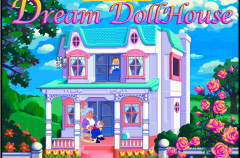Fisher Price Time To Play Dollhouse

Contents • • • • • • • • • • History [ ] Founded in 1930 by,, Price's illustrator-artist wife, and, the name Fisher-Price was established by combining two of the three names. Fisher worked previously in manufacturing, selling and advertising games for a company in.

Fisher-Price Time to Play Dollhouse is a game created by Knowledge Adventure/Davidson Associates Inc. Fisher Price Doll House. Disney Princess Snow White Cottage Play Set By Little People. Fisher Price Loving Family Dollhouse AFRICAN AMERICAN GRANDMA AND. View full Fisher-Price Time to Play Dollhouse specs on CNET.
Price had retired from a major variety chain store, and Helen Schelle previously operated Penny Walker Toy Shop in. Fisher-Price’s fundamental toy-making principles centered on intrinsic play value, ingenuity, strong construction, good value for the money, and action. Early toys were made of heavy steel parts and ponderosa pine, which resisted splintering and held up well to heavy use. The details and charm were added with colorful labels. Price was the first Art Director and designed push-pull toys for the opening line, based on characters from her children's books.
In 1931, three of the four founders took 16 of their wooden toys to the in and they quickly became a success. The first Fisher-Price toy ever sold was 'Dr. Doodle' in 1931. (The same toy, in excellent condition, would be worth a considerable amount in today's collectibles market.) In the early 1950s, Fisher-Price identified plastic as a material that could help the company incorporate longer-lasting decorations and brighter colors into its toys. 'Buzzy Bee' was the first Fisher-Price toy to make use of plastic. By the end of the 1950s, Fisher-Price manufactured 39 toys incorporating plastics. During the 1960s, the (later known as ) product line was introduced and soon overtook the popularity of earlier toys.
Herman Fisher retired at the age of 71 in 1969 and the bought Fisher-Price the same year. In 1991, Fisher-Price regained its independence from The Quaker Oats Company and became a. Two years later, in November 1993, Fisher-Price became a wholly owned subsidiary of. Torrent Mahjong Suites. A new management group set the company’s focus on basic, infant and preschool products and began expansion into international markets. By 1997, Mattel decided to market all of its products under the Fisher-Price name.
Products [ ] Fisher-Price has created approximately 5,000 different toys since the early 1930s. One of Fisher-Price’s best-known lines is Little People toys, which includes people and animal figures along with various play sets such as a house, farm, school, garage and vehicles. The figures, which originally were wooden peg-style characters, are now molded of plastic and have detailed features. In addition to Little People, some of the toys and toy brands that have remained popular for many years include,,, the, and the. Other brands marketed under the Fisher-Price name over the years include,,, and.
Fisher-Price also designs and sells infant care products and has begun developing electronic toys for preschoolers. In 2009, Fisher-Price bought all toy rights to except for the Wooden products.
Through Mattel's 2012 acquisition of, which subsequently became a division of Fisher-Price, Mattel now owns the property outright. With this, toys based on and have been subsequently released. Toy recall [ ] On August 2, 2007, Fisher-Price recalled close to a million toys, including the Dora the Explorer and Sesame Street toys because of possible hazards due to the toys being coated in lead-based paint. Purchasers of Fisher-Price toys can get information on country specific recall details and share the facts about affected toys in their area by visiting Mattel Voluntary Safety Recall Facts.